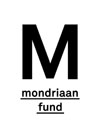Project Arts Centre presents
Jennifer Tee
Curated by Tessa Giblin
ADMISSION FREE
Jennifer Tee’s sculptures and drawings are full of abstract symbolism. Walking around an installation, you can become mesmerised by forms, the intricately woven threads, patterns possessing both a graphic image and a material presence. You can become so mesmerised in fact that you might find yourself suddenly too close to an urn, or your foot flicking the edge of a hand-made rug. A subtle thrill and pleasure emerges from this too-close encounter, and it is not just caused by the weird excitement that very vulnerable, irreplaceable objects can elicit in us. It is compounded by the shifty and unexplained double purpose for which her objects and sculptures are often intended. Jennifer Tee’s work destabilises the vessel: it becomes a pregnant carrier of meaning and association making it impossible to rest on a purely formal experience.
The rugs that she has produced for Practical Magic are beautiful: hand-dyed, hand-sewn, and produced on a hand-powered knitting loom according to precisely conceived plans, in various hues of green, blue and purple. They are grouped into a configuration that creates images in both the positive and negative space – the rug itself and the floor around it. And each of them has the graphic sense of a spider’s web shifting in the wind – a perfect geometric form that has been pulled out of shape, creating a tilted perspective that confuses the eye, and confuses your sense of equilibrium as you negotiate the space. But the pregnant part of the work is this: what if they are not just floor decoration or part of the décor – what if these things have a purpose, a use that is only truly known to those who use them? What if they have been blessed? What if they have been cursed? What if they are designed to lead you on a certain path though the room, revealing that your will is not free at all? Perhaps they are spaces for meditation. But what if there are others, elsewhere, that commune with these?
In other places of spiritual encounter we more easily recognise the structures and symbols that encroach on our sense of submission or tolerance – we can opt in or out, avoid lines of symbolism too potent or revel in something in which we feel excited, comforted, or infused. But within the realm of contemporary art and the work of Jennifer Tee, that recognisable symbolism becomes a little sticky. Throughout the room – on tables, on the floor, adorning other sculptures – are a series of ceramic totems. They look like flower forms, such as fox-glove or red-hot poker, while also resembling the bodily interior – DNA strands, brains, intestines, or cells wrapped around bone. These squat cones of coiled ceramic threads are clumsy and elegant, fragile and stumpy. They are wreathed with hand-carved titles – sensuous interiority, self-hood meltdown – and feel a bit like monuments to grave ideas, concepts that have died or existed in this place at some previous time. They are like markers of energy, tombstones placed atop a spot of terrific importance. Like chakra stones that mark the radiation of energy within the earth or the body, Tee implies that these objects have become the conduits of energy. It is a conflation you can find throughout her practice, where her interest in different belief systems and attitudes will tussle with the autonomy of the sculptural object. The idea of an artwork as having a fixed meaning gives way to a more porous concept of art, where ideas become just as layered as the set of associations around them. The coupled pieces – Occult Geometry and Practical Magic – are pregnant with more than just ideas. They harbour small porcelain cavities, which may or may not be filled with sands, spices or other ground, corporeal matter. Sprayed with colour, the air-brushed ceramics are glazed in a spectrum of softened pastels, while the baseline letters are pressed into the base like heavy black plaques. So what are these pregnant markers, these spontaneously made things?
You could look into the milky blue surface of the three glazed demi-balls for help. Or you could wait for the light to hit the brass shield at the perfect moment and reveal a mystic truth. This is the crucial integrity of Jennifer Tee’s ongoing body of work. Although it is informed by all sorts of esoteric ideas, cultural artefacts from her wide wanderings and the theosophical underpinnings of charged matter, it is also a very poignant exploration of the fundamental contradictions we are all composed of – the rational and irrational, knowing and not-knowing, believer or sceptic, spirit and matter. Her forms are both geometric and spontaneous, industrially made and hand-made, practical and magical.
Locating these contradictions and bringing them into harmony is a balancing act, and this becomes the central expression of her exhibition. At the centre of Practical Magic is a tentatively balanced sculpture. Two of the ceramic cones, spirit~matter and subtle planes protrude from the end of a long, balanced length of bamboo, anchored in a halo of white neon light at each end. It points in opposite directions, locating you in the exhibition only to split you in two. Completely white, set within a land of multi-coloured pattern, the sculpture is a helpful device, in its own, wobbly way: it is the compass of the exhibition, providing a conduit for untamed energy, and a split-directional embrace.
Biography
Jennifer Tee (b. 1973, Arnhem) lives and works in Amsterdam. Her practice includes sculpture, installation, performance, photography and collages. Jennifer Tee has made solo exhibitions in recent years at Eastside Projects, Birmingham (2010), Galerie Fons Welters, Amsterdam (2009), Artspace, Sydney (2005), Van Abbemuseum, Eindhoven, Museum voor Moderne Kunst, Arnhem (2003), Art Foundation Xiamen, Frankfurter Kunstverein (both 2002). A selection of group exhibitions include ‘Six Possibilities for a Sculpture’, La Loge, Brussels (2013), ‘Beyond Imagination’ Stedelijk Museum (2012), ‘Secret Societies’, Schirn Kunsthalle, ‘The Dutch Identity?’ Museum de Paviljoens, Almere (both 2011), ‘The Knight’s Tour’, Museum de Hallen, Haarlem (2009). Jennifer Tee has also participated in the Prague Triennale (2008), Auckland Triennial (2007), Gwangju Biennale (2006) and the Sao Paulo Biennial (2004).

